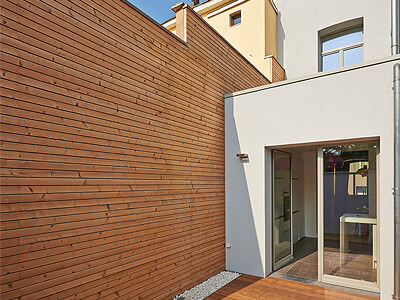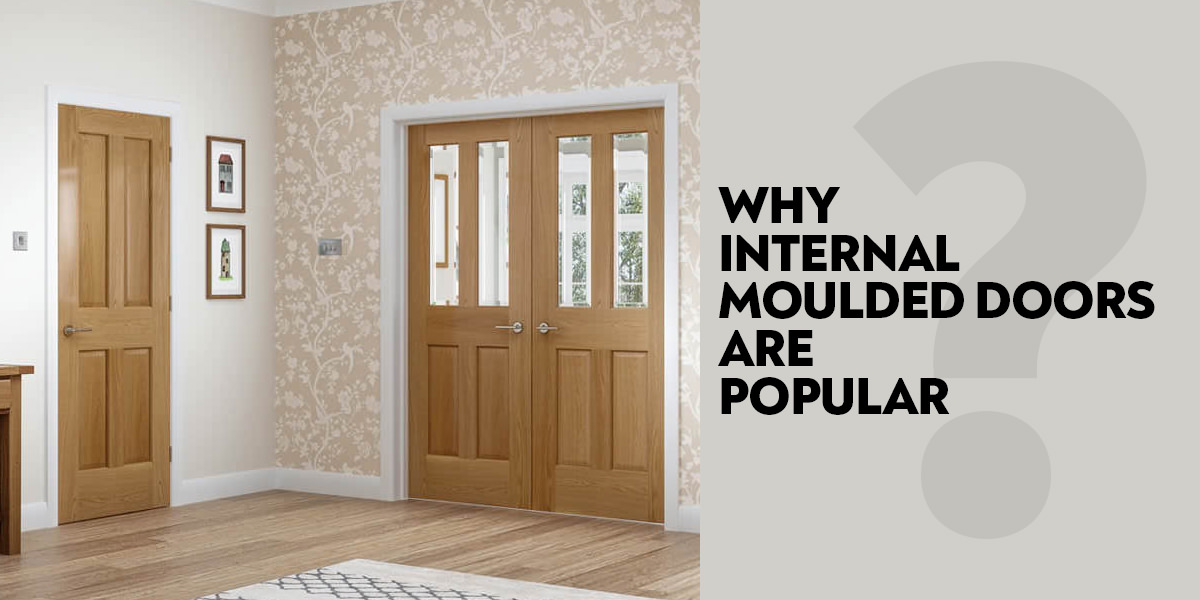
Introduction: Why Internal Moulded Doors Are Popular
Internal moulded doors are a top choice for homeowners looking for a practical and stylish solution for modern living spaces. Their lightweight design and easy installation make them ideal for contemporary homes, where convenience and functionality are key.
This guide explores the features, styles, and maintenance tips for moulded doors, helping you find the perfect addition to your modern home.
Understanding Internal Moulded Doors
What Are Internal Moulded Doors?
Internal moulded doors are built with a core material and a moulded outer layer. The surface mimics the look of solid wood, offering designs with smooth finishes or intricate panels. Depending on your needs, they're available as hollow or solid core doors, each with its own strengths.
Their lightweight build makes them easy to handle and hang, reducing the hassle of installation. Unlike solid wood, which can warp or shrink, moulded doors hold their shape over time, making them a practical choice for families and homes where durability matters.
Common Materials
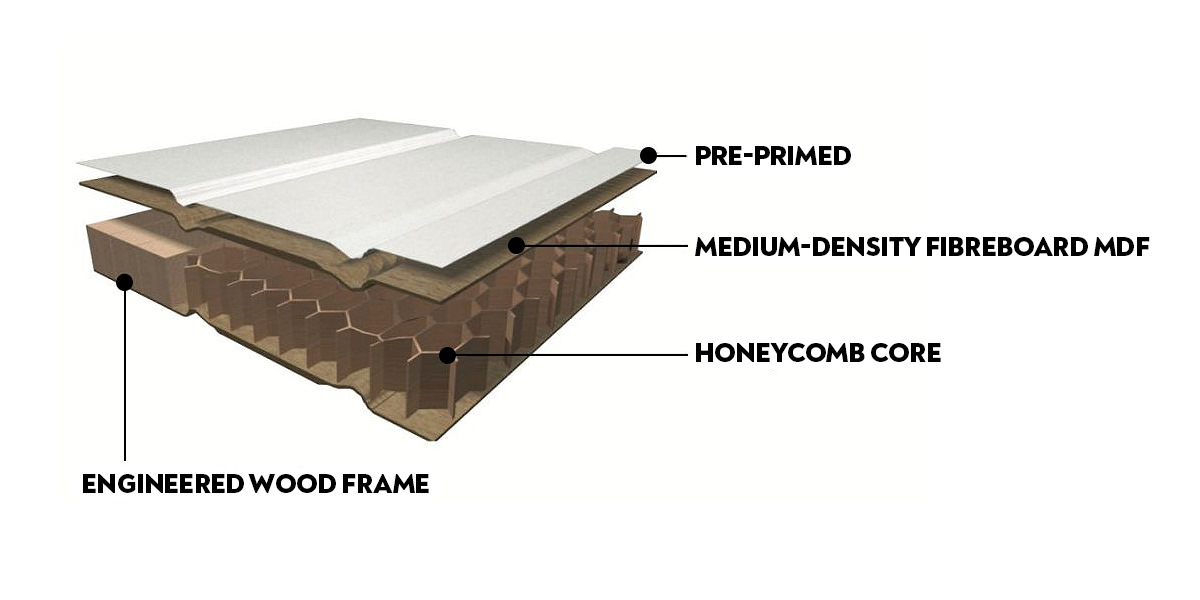
Internal moulded doors are crafted from engineered wood products. The core is typically made from medium-density fibreboard (MDF) or compressed wood fibres to ensure strength without adding weight.
The outer layer is a moulded sheet that is often pre-primed and ready to paint, allowing homeowners to personalise the finish. Some have a honeycomb core for lightweight construction, while solid core models provide better soundproofing and insulation.
Types of Internal Moulded Doors
Panel Designs
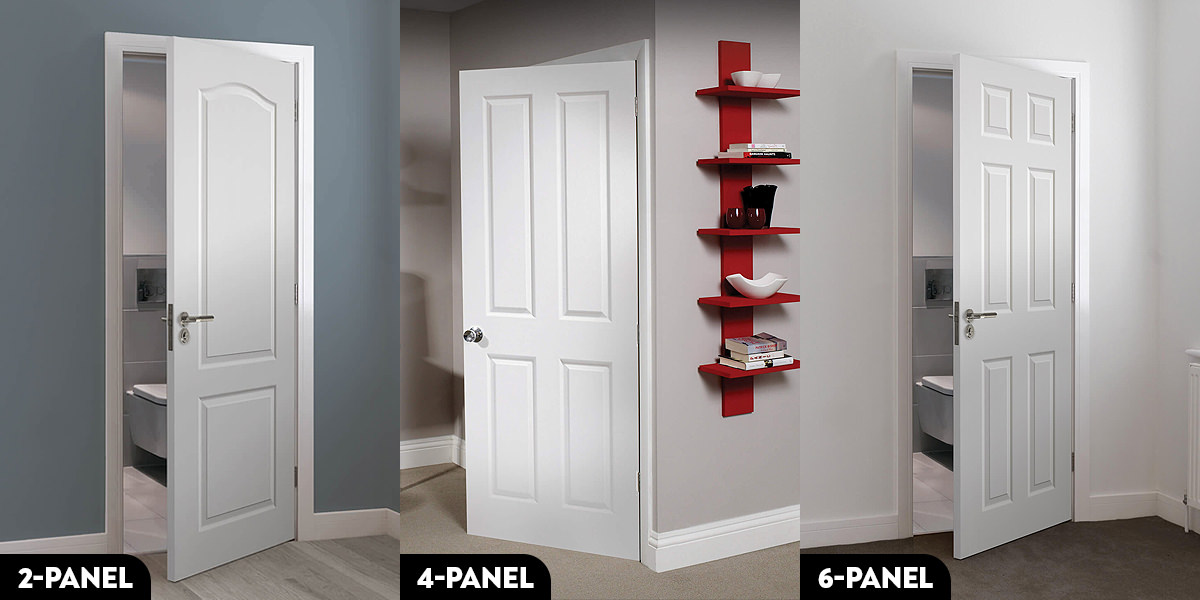
Panel moulded doors are available in a variety of styles, making them a versatile choice for modern interiors. The number of panels, ranging from two to six, creates different design possibilities to complement contemporary decor.
Two-panel doors are sleek and minimalist. This makes them perfect for modern spaces that emphasise clean lines and simplicity. They offer a subtle, sophisticated look that works well in smaller rooms or open-plan layouts where understated elegance is key.
Four-panel doors provide a balance of detail and simplicity. Their symmetrical design adds visual interest without being overpowering, making them ideal for versatile spaces like living areas or bedrooms.
Six-panel doors bring a touch of boldness to modern interiors. Their structured design adds depth and character, creating a striking feature that stands out in large or formal spaces. While traditionally more decorative, they can also be tailored to suit contemporary settings with smooth finishes and neutral tones.
Glazed Options
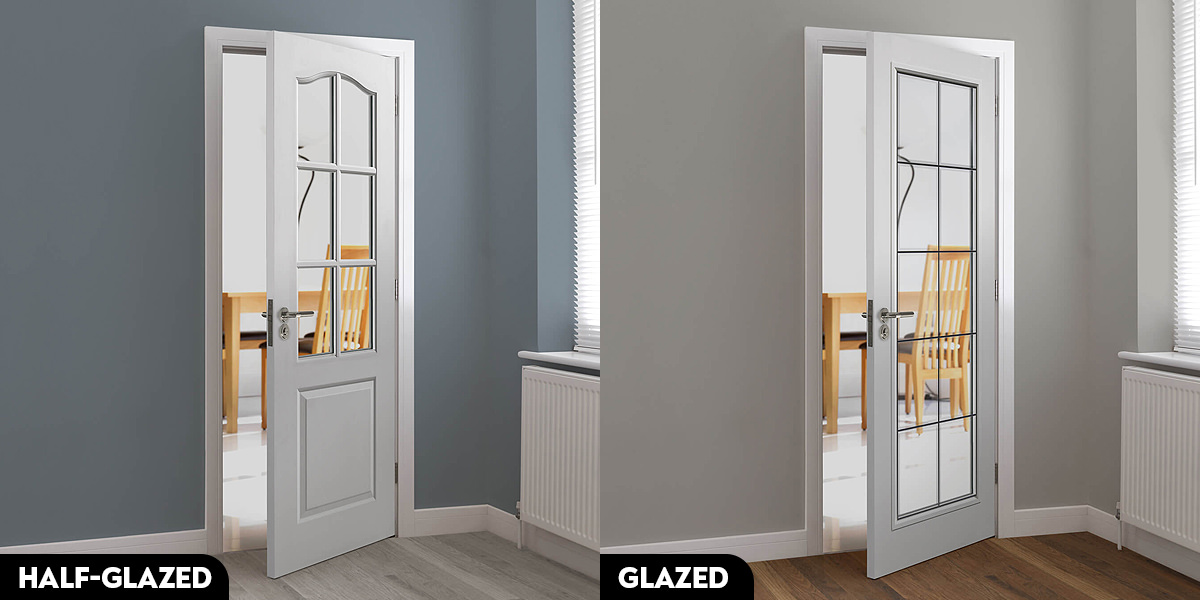
Glazed moulded doors are great for bringing light into your home. Half-glazed doors include glass panels in the upper section, making them perfect for spaces where you need a mix of privacy and light.
Fully-glazed options, with clear or frosted glass, brighten up darker areas like hallways or connecting rooms.
Frosted glass is a popular choice for maintaining privacy while allowing light to flow. These doors are practical and stylish, offering flexibility for open-plan designs or cosy spaces.
Classic Styles
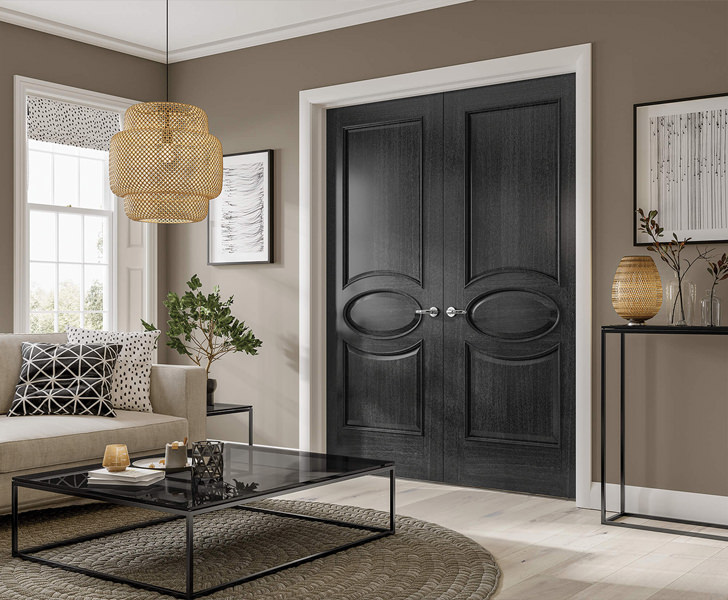
Classic moulded doors are designed to resemble traditional wooden doors and often feature raised panels and decorative mouldings that create a timeless look. These doors are perfect for older homes and offer an affordable alternative to solid wood.
Unfinished versions can be customised with paint or stain to match period interiors. Their lightweight design makes them easy to fit, even in homes with uneven frames.
Modern Innovations
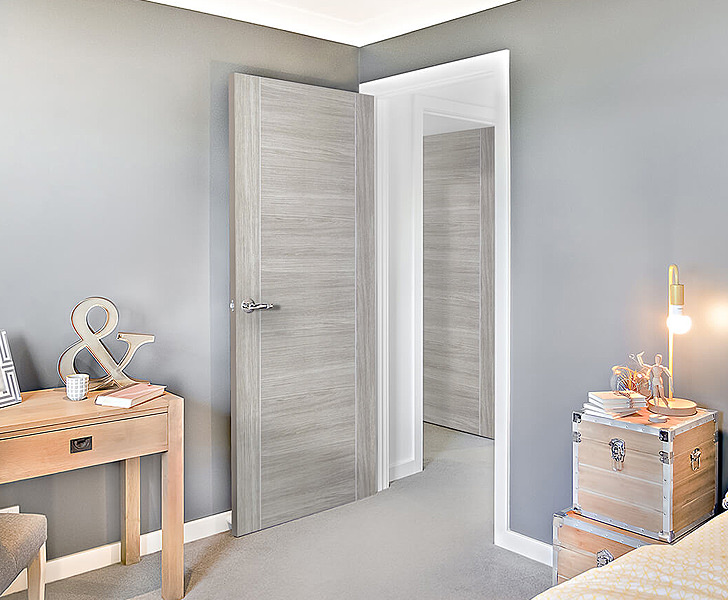
Modern moulded doors cater to contemporary tastes. Flat-panel designs with smooth finishes suit minimalist interiors, while features like concealed hinges or magnetic latches add a seamless touch.
Some doors have acoustic cores, making them an excellent option for bedrooms or home offices where soundproofing is essential.
Scratch-resistant finishes are another innovation, helping busy families keep their doors looking new for longer.
Internal Moulded Door Buying Guide
Key Factors to Consider
Before buying a moulded door, think about where it will be used.
For high-traffic areas, solid core doors offer better durability and sound insulation. Hollow core options are lighter and more affordable, making them a good fit for less-used spaces.
Consider the door's design as well. Panel layouts and finishes should match the style of your home, and unfinished doors allow for personalisation, while pre-primed versions save time during installation.
Ensure the door's dimensions fit properly, especially if replacing an existing one.
Cost Comparison by Material and Style
These doors are a budget-friendly choice compared to solid wood. Hollow core doors are the most affordable, while solid core designs cost slightly more but provide added benefits like insulation.
Glazed doors and intricate panel styles come at a higher price. However, they're worth considering for key spaces like living rooms or entryways.
Overall, moulded doors deliver excellent value across a range of styles and budgets.
Maintenance Tips for Internal Moulded Doors
Cleaning and Care

Cleaning moulded doors is quick and simple, making them a practical choice for busy spaces. A damp cloth is ideal for wiping down surfaces, while non-abrasive cleaners can tackle tougher marks without damaging the finish. Use a mild glass cleaner to keep glass panels clear and streak-free.
Regular dusting is important, especially for panelled designs where grooves and details can collect dirt. A soft brush or vacuum attachment works well for reaching these areas. For painted doors, avoid harsh chemicals that could strip the paint or dull the finish.
Keeping hinges and handles free of grime ensures smooth operation. A little regular care will help preserve your door's appearance and functionality for years.
Handling Wear and Tear
Even the most durable doors can show signs of wear over time, especially in high-traffic areas. Small scratches or scuffs can be touched up with matching paint or a repair kit. Deeper dents or damage may need professional attention to restore the surface to its original state.
Inspect hinges and handles regularly to ensure they remain secure. Tighten any loose screws, and lubricate squeaky hinges with a small amount of oil to maintain smooth movement. Adding door stops can prevent accidental impacts that might damage the door or surrounding walls.
If the glazing is damaged, replace it promptly to maintain the door's appearance and functionality.
Energy Efficiency and Sustainability
Internal moulded doors contribute to energy efficiency by helping to insulate rooms. Solid core doors, in particular, reduce draughts and maintain consistent indoor temperatures, which can help lower energy bills. Glazed doors with double glazing enhance this benefit by retaining warmth while letting in natural light.
From a sustainability perspective, moulded doors are a responsible choice. Made from engineered wood, they use materials efficiently, reducing waste compared to solid wood options.
Proper care extends their lifespan, minimising the need for replacements. Choosing low-VOC paints or finishes further supports eco-friendly practices, making them ideal for environmentally conscious homeowners.
Conclusion: Finding the Perfect Internal Moulded Door
Internal moulded doors are a smart choice for modern homes, offering a blend of style, practicality, and affordability. Their lightweight design, variety of panel and glazed options, and low-maintenance features make them ideal for contemporary living spaces.
Whether you're looking for a sleek, minimalist design or a door that enhances natural light, moulded doors provide the flexibility to suit your needs. By considering the insights in this guide, you're well-equipped to select an internal moulded door that complements your modern home perfectly.

